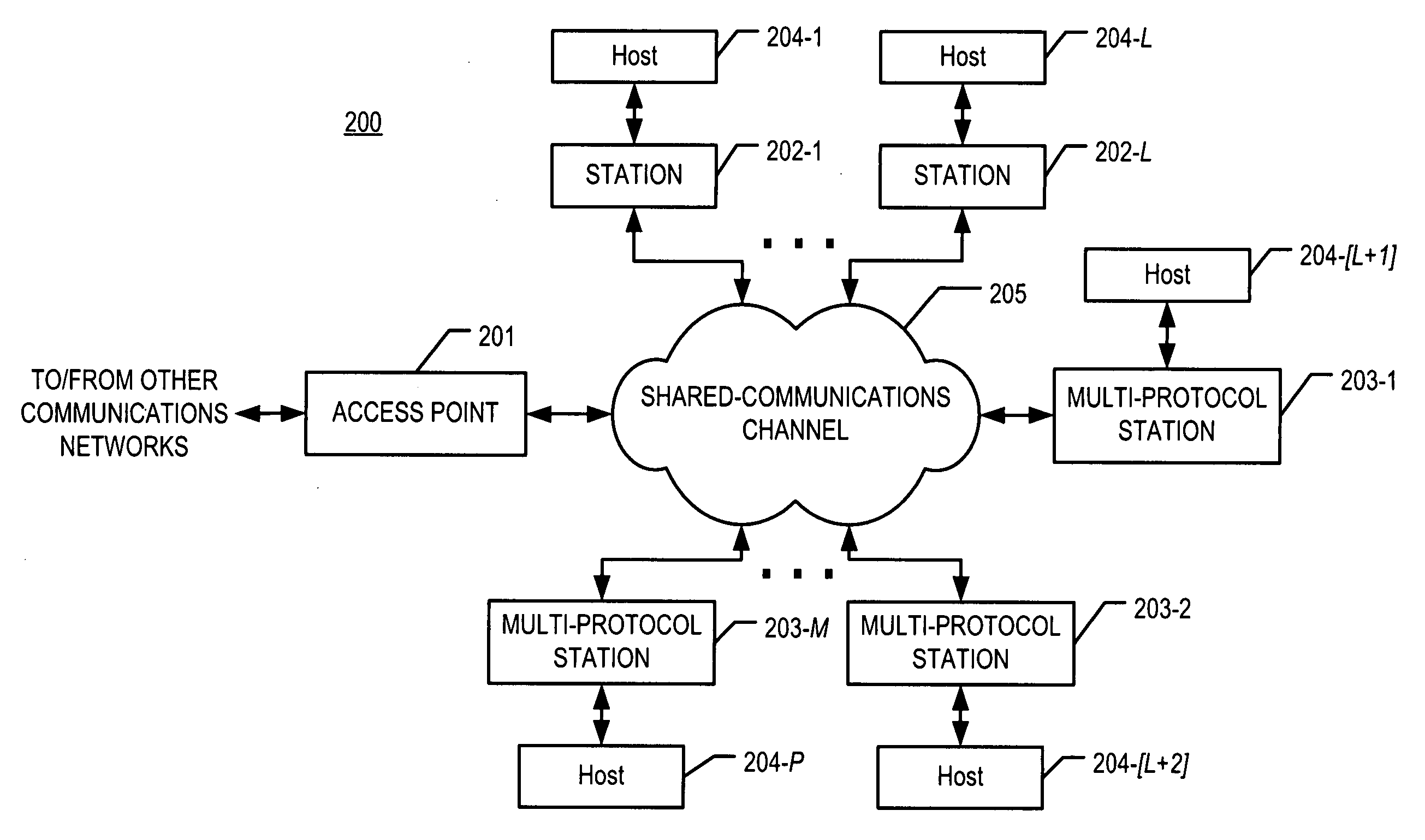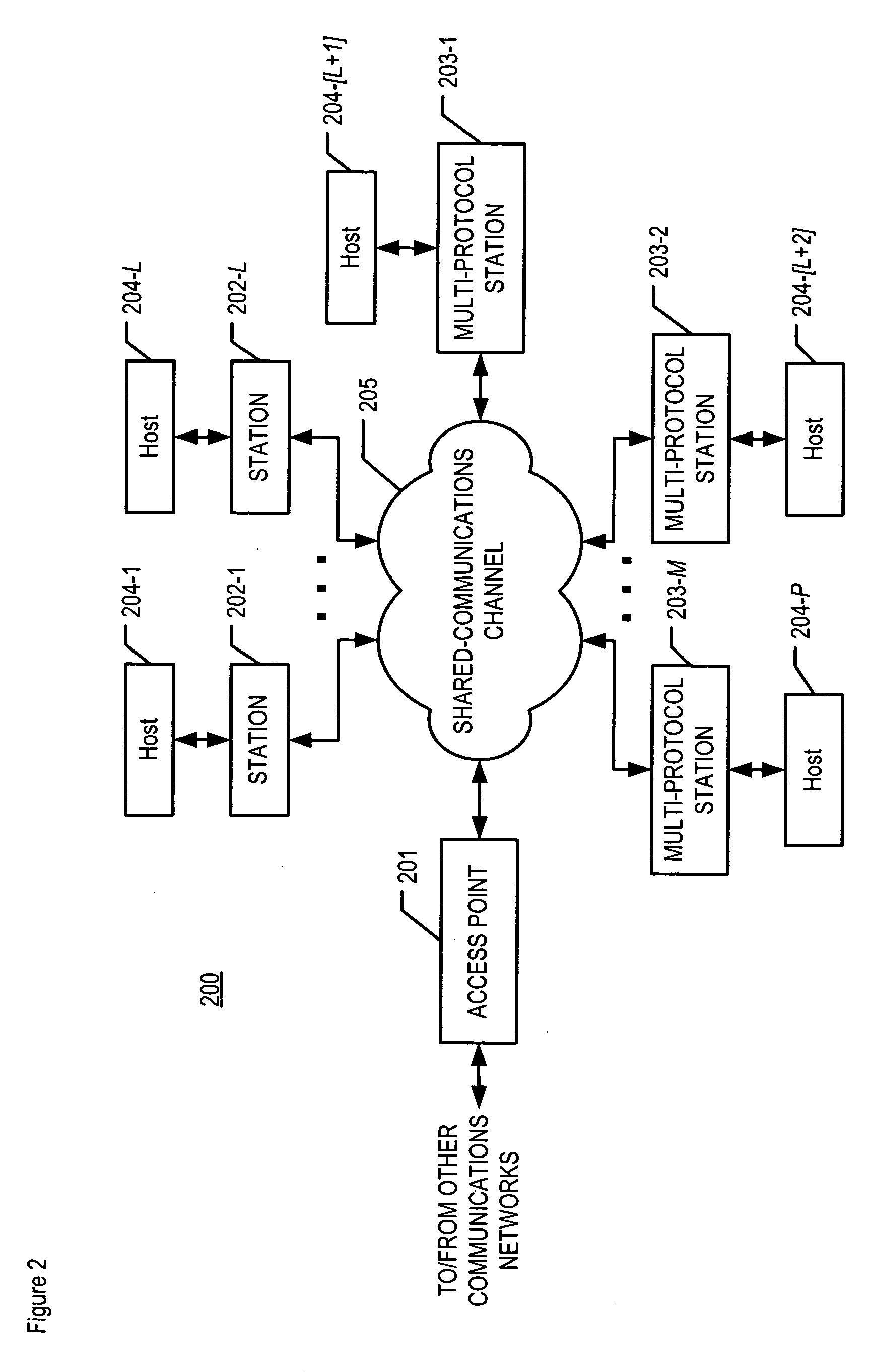Managing coexistence of separate protocols sharing the same communications channel
a technology of communication channel and protocol, applied in the field of telecommunications, can solve the problems of packet traffic arbitration not providing overall arbitration, packet traffic arbitration not providing arbitration for ieee 802.11,
- Summary
- Abstract
- Description
- Claims
- Application Information
AI Technical Summary
Benefits of technology
Problems solved by technology
Method used
Image
Examples
Embodiment Construction
[0020]FIG. 2 depicts a schematic diagram of network 200 in accordance with the illustrative embodiment of the present invention. Network 200 comprises access point 201; stations 202-1 through 202-L, wherein L is a positive integer; multi-protocol stations 203-1 through 203-M, wherein M is a positive integer; host computers 204-1 through 202-P, wherein P is a positive integer equal to L plus M; and wireless shared-communications channel 205, interconnected as shown. In some embodiments, network 200 is a wireless local area network.
[0021] Access point 201, stations 202-1 through 202-L, and multi-protocol stations 203-1 through 203-M operate in accordance with an IEEE 802.11 standard. Multi-protocol stations 203-1 through 203-M also operate in accordance with the Bluetooth standard.
[0022] It will be clear to those skilled in the art, after reading this specification, how to make and use embodiments of the present invention that operate in accordance with other protocols. Furthermore,...
PUM
 Login to View More
Login to View More Abstract
Description
Claims
Application Information
 Login to View More
Login to View More - R&D
- Intellectual Property
- Life Sciences
- Materials
- Tech Scout
- Unparalleled Data Quality
- Higher Quality Content
- 60% Fewer Hallucinations
Browse by: Latest US Patents, China's latest patents, Technical Efficacy Thesaurus, Application Domain, Technology Topic, Popular Technical Reports.
© 2025 PatSnap. All rights reserved.Legal|Privacy policy|Modern Slavery Act Transparency Statement|Sitemap|About US| Contact US: help@patsnap.com



